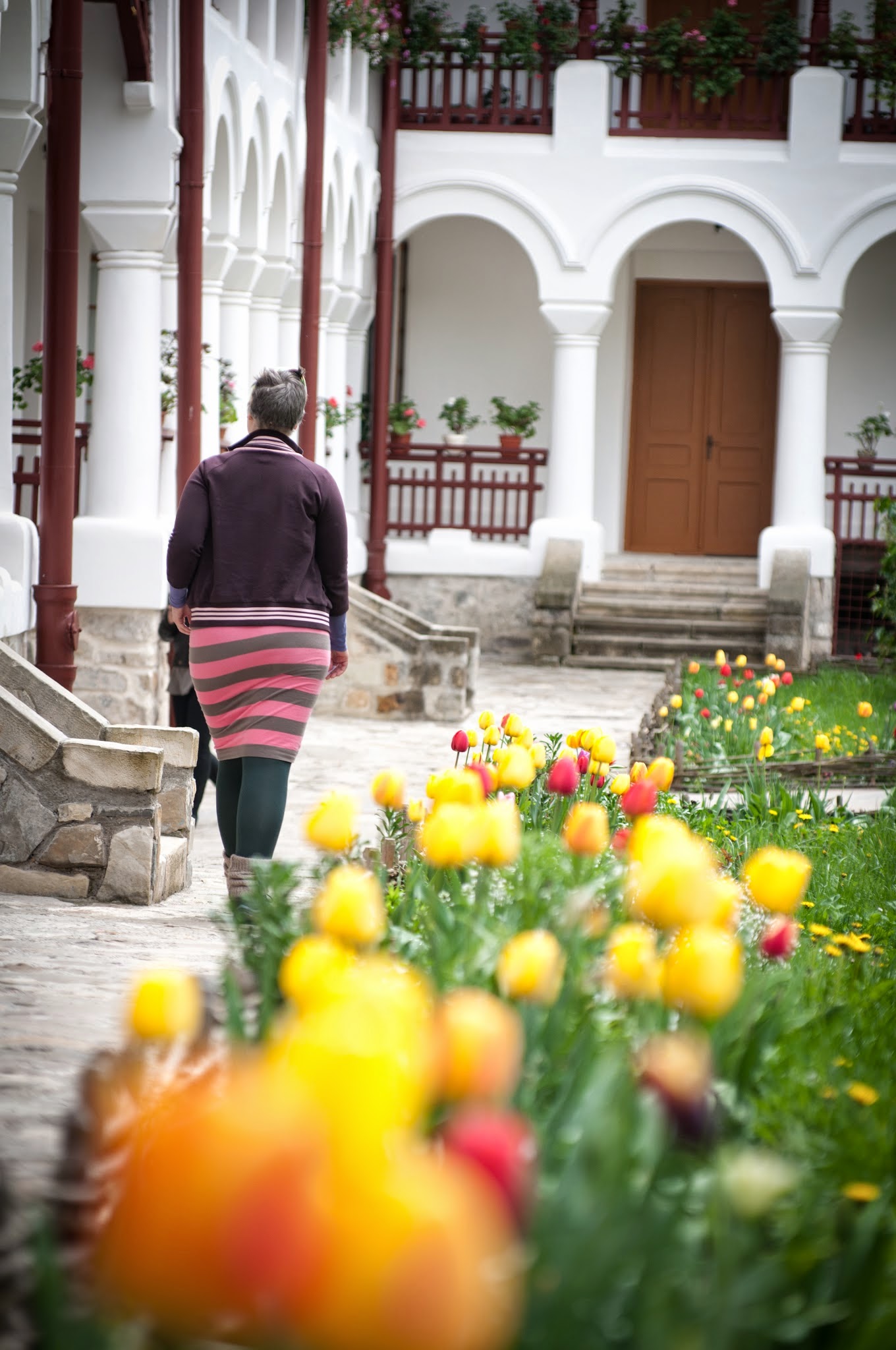Project NT
- Day 1
Whenever we travel around Moldova or even to Dobrogea, our favourite hub is Oneşti, conveniently located at a two-hour ride from Braşov. Plus, accommodation is free of charge, as Marcel’s parents live there. :D
Oneşti it was this time around, too.
- Day 2
With an early start to our day, we were in Piatra Neamţ in no time. The first ‘stop’ was a delight – Cucuteni Neolithic Art Museum [opening hours: 10-18 (April-September) & 9-17 (October-March) (Tue-Sun); admission fee: 8 lei (students), 16 lei (adults)].
It was followed by a climb into Stephen the Great’s Tower (1499), part of the Royal Court ruins [as it was hit by lightning in 2022, it has been temporarily closed], accompanied by our very passionate and kind guide.
Some pictures of Adolph Chevalier – the former royal photographer – turned into postcards, inspired us to visit the Ethnographic Museum [opening hours: 10-18 (April-September) & 9-17 (October-March) (Tue-Sun); admission fee: 8 lei (students), 16 lei (adults)].
Although hungry (a bit), the rays of the sun looked inviting, so we headed to Bâtca Doamnei, favourite picnic ground of the locals – with a different significance to me: the location of Petrodava Dacian Fortress ruins. Perched on a promontory at 457 m [yes, I found the climb a bit more difficult than advertised!], we could see the surrounding lush and mellow hills, dressed in May’s crude green, and the eponymous lake with the adorable swans that had surprised us in numbers. It was also a great opportunity to become friends with a beautiful Akita while going downhill and chewing some sour beech leaves that made me smile even more and left me feeling one with nature.
Lunch had to follow [a pretty disappointing experience, in line with all the meal-related experiences we had in Neamţ County (this excludes breakfasts)] and then we had a bit of time left for a short visit to our great storyteller’s home in Humuleşti: Ion Creangă’s Memorial Museum [opening hours: 10-18 (April-September) & 9-17 (October-March) (Tue-Sun); admission fee: 10 lei (students), 20 lei (adults)].
In the end, we reached our accommodation, Pensiunea Carol in Oglinzi Băi and had dinner there, with a large flock of cranes flying right above our heads, to bid us ‘good night’.
- Day 3
I had envisioned the day to hit off in a different manner, as I had discussed the details of a riding session with Mr. Grădinaru from Depozitul de Armăsari Dumbrava. Unfortunately, it was raining. So, our backup plan had to step in.
Luckily, we hadn’t been able to explore Neamţ Fortress the day before, so we headed there [opening hours: 10-18 (April-September) & 9-17 (October-March) (Tue-Sun); admission fee: 12 lei (students), 24 lei (adults)]. Although I admit that I would’ve liked to also see it in ruins, the restoration works were quite neatly performed and it is quite an impressive place, which could easily make its way to my list of favourite castles and fortresses.
Târpeşti was the next stop of our day. I had booked us a room at Popa Museum, one enchanting traditional mansion also housing one of the loveliest collections I’ve seen in Romania.
With our hearts filled with good art and inspiring talks with the owner of Popa Museum, we went on a local tradition hunt. I forgot to mention that, while visiting the Ethnographic Museum in Piatra Neamţ, I had fallen in love with the vibrant colours of the region’s traditional costumes. I would’ve liked to purchase a leather-sewn bundiţă [~thick and richly-decorated vest], but I was told that there weren’t any craftsmen left to make them, so I opted for a woollen one instead. Found the lady in Tg. Neamţ, got my measures taken and... ta-dah! I will probably have it sent to Braşov mid-July.
Another unsuccessful dinner attempt followed and then the inviting travel-, history-, and archaeology-related talks started in the afternoon continued well into the night, a glass of cherry brandy by my side.
- Day 4
I had risked it all, but it was worth it. The sun was again up, the birds were singing, we headed to Văratec. After visiting the monastery and seeing poet Veronica Micle’s grave in the courtyard of the neighbouring church, we bought some delicious pastry from the monastery’s bakery and made another stop.
This time, at Văratec Forest Division Office. The very nice man on duty there allowed us to enter Pădurea de Argint [the Silver Forest], a small birch forest, mentioned in one of our national poet Mihai Eminescu’s greatest creations.
Keen to see the equally-famous Codrii de Aramă [the Brass Woods], mentioned in the same poem, we went around Agapia Village and ended up high on a hill overlooking this dense oak forest, close to sheepherders and fluffy sheepdogs. It was my favourite moment – I felt the cold air hit my cheeks, my joy rise, and altogether... free.
Agapia Monastery [admission fee: 2.50 lei (students), 5 lei (adults)], painted by Nicolae Grigorescu [there is a museum housing some of his paintings inside the monastery], was next. I’m not a big fan of churches and monasteries; however, I try to see them as historical monuments when visiting. Not as beautiful and rich vibe-wise as the monasteries in Maramureş and Bucovina, in my opinion, these two monasteries are still worth a tiny part of your time.
Last, we went to see the symbols of Moldova, our beautiful zimbrii (European bisons). There were 5 of them left in captivity at Dragoş-Vodă Centre [admission fee: 15 lei (adults), 7 lei (children)], while Rewilding Europe has released some others into the wild. Hope to see them roaming free one day.
It all ended gloriously, with a view over Izvorul Muntelui Lake, which became a must-paddle place to me! On another trip and occasion...
N.B. The rates listed in the article were those current on 01.11.2023.
N.B. The rates listed in the article were those current on 01.11.2023.




















No comments: